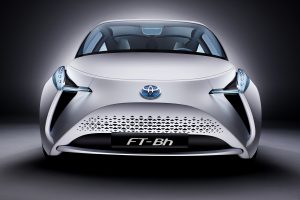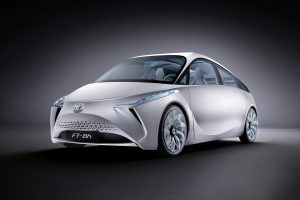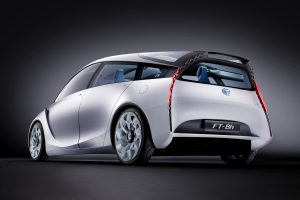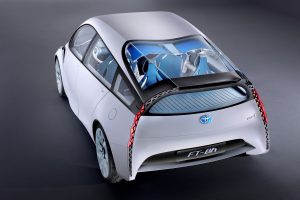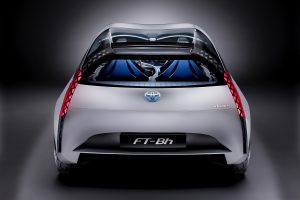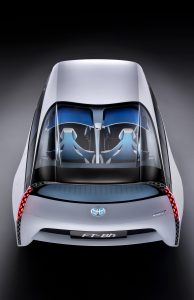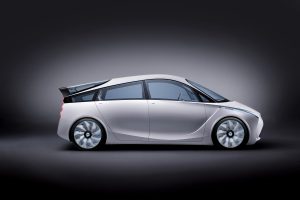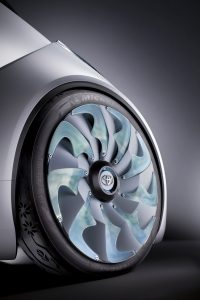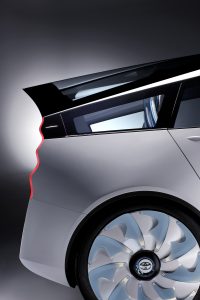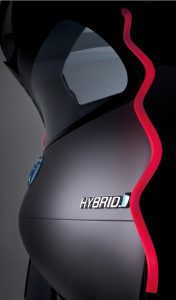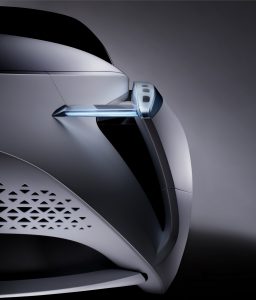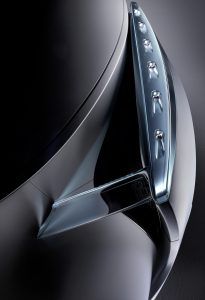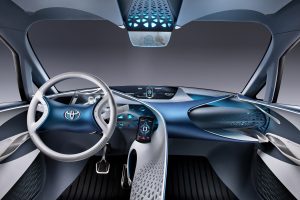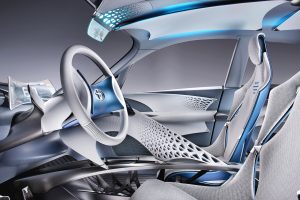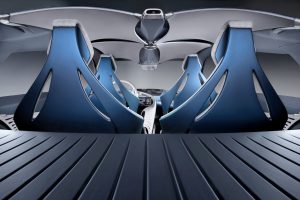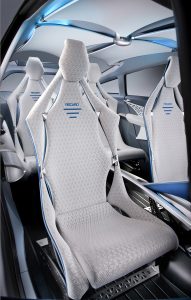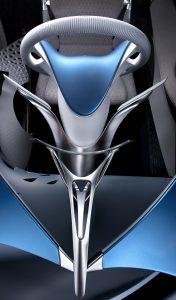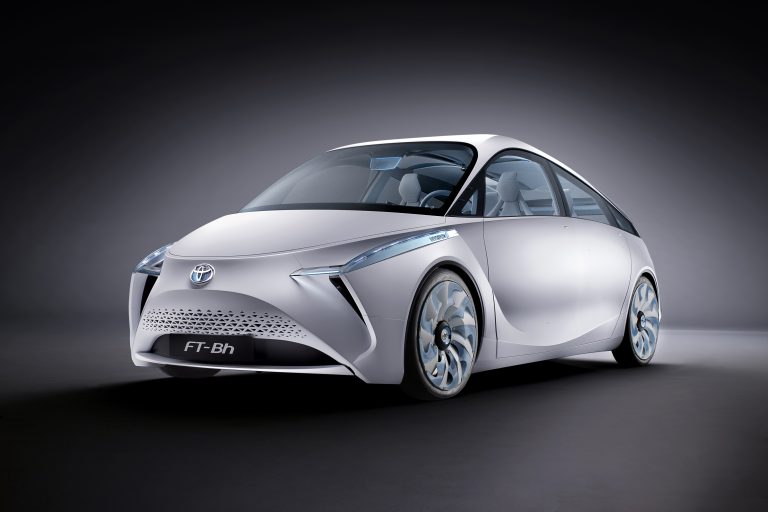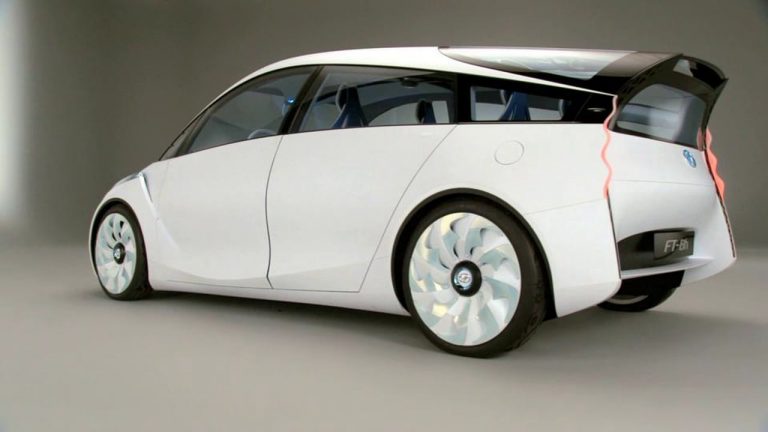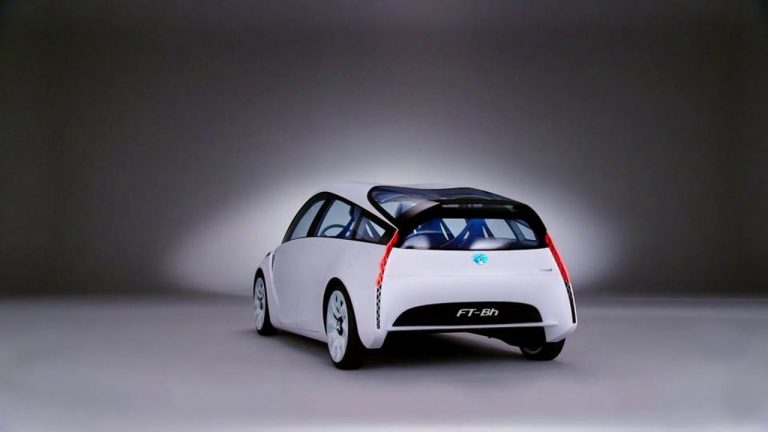Toyota Engineers a Super-efficient and Affordable Hybrid Future with the FT-Bh Concept
KEY POINTS
- New Toyota concept targets minimised emissions from a vehicle that uses economically viable technologies and manufacturing methods
- Longer than a Yaris, but 25 per cent lighter thanks to comprehensive weight-saving
- High aerodynamic efficiency, with 0.235 drag coefficient
- Full hybrid powertrain featuring high-efficiency two-cylinder 1.0-litre petrol engine
- Average134.5mpg and 49g/km CO2 emissions – new performance benchmarks for a full hybrid vehicle
- Flexibility of Toyota Hybrid Synergy Drive gives potential for future compressed natural gas hybrid and plug-in hybrid versions with even lower carbon emissions
- World premiere at the Geneva motor show
Toyota’s new FT-Bh concept is a vehicle designed to take the efficiency of full hybrid vehicles to new heights. Making its debut at the Geneva motor show, it is an ultra-light concept, weighing less than 800kg, which demonstrates what can be achieved in terms of fuel consumption and CO2 emissions in an affordable family supermini.
Thanks to its low weight, exceptional aerodynamic quality, very low driving resistance and its highly efficient powertrain, FT-Bh can achieve an average 134.5mpg fuel consumption and 49g/km CO2 emissions.
Those figures are from a vehicle that is close in size to today’s Yaris, at 3,985mm long, 1,695mm wide and 1,400mm tall, with a 2,570mm wheelbase. The emissions are about half the level of those produced by a 1.0-litre Yaris.
In their mission to achieve the best possible fuel economy and emissions, the design team focused on five key areas: reducing weight; driving resistance (including aerodynamic and tyre performance); powertrain efficiency; thermal energy management; and electricity savings.
Toyota recognises that a real-world reduction of total global vehicle CO2 emissions can only be brought about if an affordable, ultra-low emissions vehicle can be manufactured and sold in sufficiently high volumes. That made it important that the concept did not require exotic, expensive materials or complex manufacturing procedures, but used instead only those that are already commonly available in the motor industry.
Design
“Ecomotion” was the theme for styling FT-Bh, with its shape demonstrating a new approach to bodywork design. Key panels, such as the roof, are formed to represent the way fabric can be stretched taut between fastening points, to reflect their ultra-light weight.
The front end of the car broadcastsToyota’s current design language with its large lower grille, together with a sculpted bonnet and headlamps that are integrated into the front wings. Ultra-slim A and C-pillars maximise the glazed area for better visibility and a greater sense of space in the cabin.
The way in which the cabin merges seamlessly into the rear of the vehicle, with an uplifted rear bumper and chevron-shaped corner elements, helps achieve the best possible aerodynamic performance and deliver a drag coefficient of just 0.235.
The stretched fabric-look carries through to the minimalist interior, with a concave centre console creating a driver-focused cockpit, while maintaining the overall feeling of light and space.
Weight saving
The target for FT-Bh was a 25 per cent saving on the 1.0-litre Yaris’s 1,030kg kerb weight. Using a combination of high-tensile steel, aluminium and magnesium in the construction has trimmed the weight to just 786kg.
In fact, because the hybrid powertrain is heavier than the three-cylinder 1.0-litre engine (weighing about 60kg), the combined mass of the bodyshell, interior trim, chassis and electronics had to be reduced by around 340kg – one third of Yaris’s weight – to achieve the target.
Such a large saving in the weight of cabin parts has had a ripple effect in weight reduction in the rest of the vehicle. For example, it means there is less load applied on the body structure and suspension, allowing components to be downsized. And less weight means a smaller displacement engine can be used, further saving weight and thermal energy losses.
Powertrain
FT-Bh’s full hybrid drive system is a masterpiece of powertrain downsizing. With substantial weight savings in every driveline component, it is almost 90kg lighter than theHybrid Synergy Drivesystem used in today’s Prius.
The lightweight, two-cylinder, 1.0-litre Atkinson cycle petrol engine combines high efficiency with low thermal capacity and benefits with detailed measures to increase combustion efficiency and reduce friction. As a result, FT-Bh achieves an average fuel consumption of 134.5mpg and CO2 emissions of just 49g/km.
The car’s light weight makes it agile and responsive to throttle and brakes, and thanks to its electric motor delivering maximum torque from standstill, it is nimble, too.
FT-Bh demonstrates the adaptability of Toyota’s Hybrid Synergy Drivetechnology. It serves as a study for how even greater fuel efficiency might be achieved in the medium term by using two alternative powertrains: a compressed natural gas hybrid (CNG-HV), with 38g/km CO2 emissions; and a Plug-in hybrid (PHEV), emitting just 19g/km.
Lower driving resistance
The concept represents a comprehensive study in next-generation aerodynamic techniques. It features air curtain intakes on the frontal extremities of the bodywork; air-stream alloy wheels; the replacement of airflow-disrupting door mirrors with cameras; latches in place of handles to open the doors; a pagoda-style roof with a dropped rear section; and a sharply cut rear end that incorporates an air outlet slit and an underfloor spoiler to smooth the flow of air away from the vehicle.
Together these measures bring the Cd down from a B-segment/supermini average of about 0.29 to just 0.235.
FT-Bh rides on narrow, large diameter 145/55R18 low rolling resistance tyres, which make a significant contribution to bringing down the road load and driving resistance, with no loss of grip or traction.
Thermal energy management and electricity saving
Further goals for FT-Bh were improvements in the recovery of thermal energy and a 50 per cent reduction in electricity consumption. The cabin uses thermally efficient components and the air conditioning focuses only on parts of the car where people are sitting.
The amount of electricity used by the LED headlamps, interior lighting and other electrical components has been drastically reduced, to the extent that power consumption is half that of conventional cars. The glazing has been designed for maximum thermal efficiency and even the matte paint has been chosen for its excellent heat insulation characteristics.
ENDS

